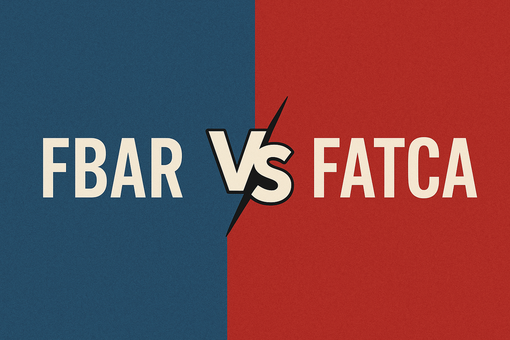Understanding Subpart F income: Complete guide for US shareholders

For years, many Americans with overseas companies used foreign entities to delay paying US tax on profits earned abroad. Congress responded by creating Subpart F income rules to close that gap and ensure fairness between domestic and international businesses. When a foreign corporation qualifies as a CFC, its earnings can become taxable in the same year they’re earned, even without a payout, keeping US taxation aligned with real economic activity.
In this article brought to you by Taxes for Expats, your trusted resource for accurate cross-border tax guidance, you will find in detail:
- Those affected by Subpart F rules include US shareholders holding at least 10% ownership in a CFC.
- Exceptions and exclusions, such as the high-tax exception at 18.9% and de minimis thresholds, can reduce inclusions.
- Reporting and compliance require Form 5471 and related filings, with penalties that start at $10,000.
- Current 2025–2026 updates under Public Law 119-21 make the look-through rule permanent, repeal the one-month deferral, introduce Section 951B for foreign-controlled structures, and many more.
Learn how our team turns complex Subpart F rules into real savings and peace of mind for US shareholders, and reach out today to make your expat taxes simple, accurate, and stress-free.
Historical origin and progression of Subpart F rules
Now, long before international tax rules became the complex system we know today, American companies were already finding creative ways to keep profits overseas. Courts began to notice the gaps, and one pivotal moment came with Eder v. Commissioner (2d Cir. 1943), which upheld taxing shareholders on undistributed foreign personal holding company earnings – a decision that exposed how easily profits could escape immediate US taxation. That judicial gap pushed Congress to act, leading to the creation of Subpart F in 1962 to close loopholes and ensure foreign income could no longer hide beyond reach.
The Revenue Act of 1962 built the controlled foreign corporation framework, giving the government tools to trace and tax overseas profits more transparently. It required the current inclusion of certain categories tied to a CFC’s gross income, later detailed under section 954. For US shareholders, this became the foundation of subpart F income, designed to stop indefinite tax deferral on offshore gains.
Further modernization came with the Tax Cuts and Jobs Act of 2017, which introduced GILTI under section 951A while keeping Subpart F’s targeted focus on passive and related-party income. In 2024, the Supreme Court’s Moore decision reaffirmed that Congress can attribute realized but undistributed foreign earnings to shareholders. And by 2025, Congress made the look-through rule permanent and restored section 958(b)(4) for tax years of foreign corporations beginning after December 31, 2025 – ensuring Subpart F remains central to today’s evolving global tax framework.
Who is affected by the Subpart F rules
Before getting into what a controlled foreign corporation means, it helps to first understand what subpart F income actually covers, as it’s the rule that can pull certain foreign profits into a shareholder’s gross income for the year, even when no money moves across borders. Imagine a Cayman financing company that earns related-party interest but never sends a dividend – those earnings can still show up on the owner’s US tax return under subpart F. Having that picture in mind, it becomes easier to see how these rules connect with the concept of a CFC, so let’s look at what that means next.
Under section 957(a), a CFC is defined by the IRS as a foreign corporation where US shareholders own more than 50 percent of the vote or value at any time during the year. In plain terms, it’s simply a company outside the United States that is mostly owned by Americans.
Building on that, the law identifies who counts as a US shareholder for these purposes, and this group also handles much of the reporting through Form 5471.
- Any US person who owns at least 10% of the total voting power of all classes of stock.
- Any US person who owns at least 10% of the total value of all classes of stock.
- “US person” includes individuals, corporations, partnerships, trusts, and estates, as detailed in sections 951(b) and 957(c).
NOTE! Ownership attribution rules in section 958 determine how shares held through entities or family members are counted. Congress reinstated the bar on downward attribution from foreign parents to US subsidiaries in section 958(b)(4) and added section 951B for foreign-controlled groups, both effective for tax years of foreign corporations beginning after December 31, 2025. These updates also interact with GILTI calculations, ensuring consistency in how income is allocated and reported.
Key categories of Subpart F income
Subpart F breaks foreign income into a few main types that US shareholders must track for controlled foreign corporations. These categories determine what gets taxed currently and what can stay deferred.
Foreign personal holding company income (FPHCI)
This mainly covers money a foreign company earns from passive sources – things like interest, dividends, rents, and royalties – under section 954(c). When one controlled foreign corporation pays another inside the same group, the section 954(c)(6) look-through rule, made permanent for years starting after December 31, 2025, can keep that income from being taxed right away if it comes from real business profits. A financing company in a low-tax country that loans money to a related affiliate often falls into this category.
Foreign base company sales income (FBCSI)
Section 954(d) covers profits a foreign company makes from buying or selling goods to related businesses outside its home country. If the goods are made by that company or the deal happens inside its own country, the income can be excluded. The law has a break for small amounts – no Subpart F income if sales and insurance income together are less than 5% of total income or 1 million dollars – and a rule that makes all of it taxable if those items are more than 70% of total income. A trading office that buys products from a related factory and sells them abroad usually fits here.
Foreign base company services income (FBCSvI)
Section 954(e) applies when a foreign company provides services to related businesses outside its own country. Many multinationals have shared service centers that handle accounting, IT, or logistics for group companies in other places, which often makes this income count as Subpart F. Work performed in the same country as the company’s incorporation normally avoids it.
Insurance and certain related income
Section 953 brings in insurance income, including premiums from related parties or coverage of US risks. If the income is taxed abroad at a rate above 18.9% – which equals 90% of the 21% US corporate rate – it can qualify for the high-tax exception and be left out. A foreign insurer that sells coverage protecting US property or affiliates is the typical case affected by these rules.

How to calculate Subpart F income
A foreign corporation just finishing its annual accounts wants to find out how much of its overseas profit must be included in US taxable income. Sounds familiar? This is why the process should follow a clear order that turns complex tax rules into a simple working formula.
Step 1: Identify all sources of gross income. Gather the corporation’s total earnings from interest, dividends, sales, services, and insurance. A CFC earning 500,000 from passive interest and related-party services abroad starts here.
Step 2: Separate the items that fall under Subpart F categories. Mark any amounts that qualify as foreign personal holding company income, foreign base company sales income, services income, or insurance income. These categories define what the US shareholder must include.
Step 3: Apply the statutory exclusions. Use the de minimis test – the lesser of 5% of gross income or 1,000,000 – to drop small amounts. If Subpart F categories exceed 70% of gross income, the full-inclusion rule brings all income into Subpart F.
Step 4: Review the high-tax exception and look-through relief. The high-tax exception excludes income taxed above 18.9%, while the permanent related-CFC look-through rule removes certain related-party payments tied to non-Subpart F earnings. Both can sharply reduce the inclusion.
Step 5: Limit the inclusion by current-year earnings and profits. The Subpart F total can never exceed the CFC’s current earnings and profits. When E&P is 240,000 and Subpart F items reach 250,000, only 240,000 is counted.
Step 6: Multiply by each shareholder’s ownership share. Each US shareholder reports only the portion tied to their ownership percentage – so 60% ownership means recognizing 144,000 as Subpart F income.
These steps create a concise working formula: gross income minus exclusions, adjusted for high-tax and look-through rules, capped by current E&P, and multiplied by ownership share.
Ways to reduce how much Subpart F income gets taxed
Not every dollar earned by a controlled foreign corporation ends up counted as Subpart F income. The tax code carves out several important exceptions and exclusions that may keep the system balanced and prevent the same profits from being taxed twice.
- High-tax exclusion: If your foreign income is already taxed abroad at more than 90% of the US corporate rate, it usually doesn’t get taxed again under Subpart F. With the current corporate rate at 21%, the cutoff works out to roughly 18.9%.
- De minimis and full-inclusion tests: When passive or base company income is under 5% of gross income or below $1 million, it’s excluded. But if more than 70%, all is included.
- Previously taxed earnings (PTEP): Income already taxed under Subpart F isn’t taxed again on distribution. Basis adjustments under sections 961(a) and 961(b) are required.
- Look-through rule: Under section 954(c)(6), certain payments between related CFCs avoid Subpart F treatment when sourced from active income.
Reporting Subpart F income and compliance requirements
When you’re dealing with a CFC and facing Subpart F exposure, getting the reporting and filing right is essential – it lays the foundation for everything else ahead.
For most US shareholders, Form 5471 is the core disclosure tool, especially for Category 4 and Category 5 filers, where the Subpart F inclusions must be shown on Schedule I. Meanwhile, Form 8992 kicks in when you have GILTI/NCTI exposure and reports that inclusion at the shareholder level. Don’t forget to keep a detailed PTEP ledger if you’ve had past inclusions – it matters for future distributions and tracking basis correctly.
Deadlines are strict – the standard individual tax return is due April 15, and many US expats can push that to June 15, but the late-filing penalty for missing a required Form 5471 runs at least $10,000. It’s wise to model the high-tax exception early in your year’s planning because that election must match your facts exactly.
Finally, coordinate your foreign tax credit carefully – using Form 1118 for corporations, don’t overlook the impact of the permanent § 954(c)(6) look-through rule when related-CFC payments shift income character.

Consequences for ignoring compliance
For US shareholders, missing Subpart F income and the related disclosures can quickly snowball into assessments, interest, and prolonged audit exposure. A CFC owner who skipped required filings saw $160,000 in penalties and a passport certification, as seen in Ruesch v Commissioner, so we know things can get real quick.
- Late or incomplete Form 5471 can bring a $10,000 initial penalty per corporation and year, then $10,000 for each 30 days after 90 days, up to a $50,000 cap.
- Nonfiling can reduce foreign tax credits by 10% and increase by 5% each quarter to a full disallowance until compliance under 26 USC 6038(c).
- Willful conduct or false statements may trigger criminal charges under 26 USC 7201, 7203, or 7206 with fines and potential imprisonment.
- Under 26 USC 6501(c)(8), the assessment period for related items stays open until three years after the required information is furnished.
Subpart F vs GILTI: the core differences
A US entrepreneur earning abroad can face two kinds of tax wake-up calls – one on passive income that’s taxed immediately, and another on active profits that may wait their turn. That contrast captures how Subpart F and GILTI split the world of foreign earnings, each shaping when and how income gets taxed.
| Focus | Subpart F | GILTI |
|---|---|---|
| What income does each target | Picks up passive or related-party income that’s easily shifted, such as interest, rents, or royalties. | Applies to the rest of a CFC’s active profits that aren’t caught by Subpart F. |
| How they interact | Once income is taxed under Subpart F, it’s not taxed again when paid out later. | GILTI ignores anything already taxed as Subpart F, so there’s no double hit. |
| Typical use case | Common for investment or service income from related entities in low-tax countries. | Common for operating profits from real business activities abroad. |
Professional guidance for Subpart F compliance
Handling Subpart F rules takes precision – small mistakes in timing or classification can trigger costly inclusions or missed credits. Clear documentation, accurate forms, and proactive planning make all the difference when working with controlled foreign corporations. Staying compliant also means keeping pace with evolving IRS updates and the new OBBBA provisions taking effect in 2026.
Not to worry, our specialists at Taxes for Expats can always help you meet every requirement of tax compliance with confidence and clarity.


Stay IRS-compliant with your business abroad – we’re ready to help


